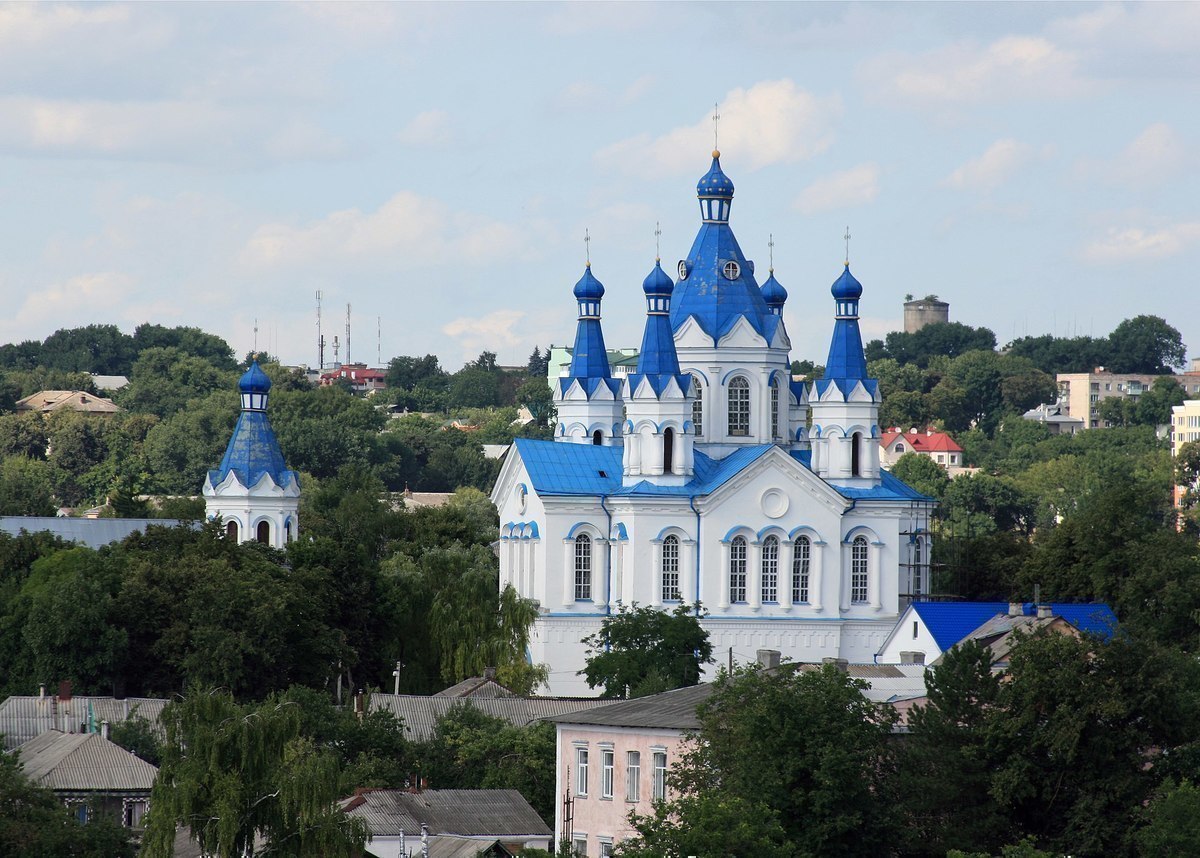St. George Church in Kamianets-Podilskyi
Type: Architectural object Kind: Religious (Active)
Country: Ukraine Region: Khmelnytsky region Locality: Кам'янець-Подільський
Availability: Available for visits, Good road
The Church of St. George on the Polish folwarks appeared not on an empty place. The first mention of the church with the same name in the suburb of Polish folwarks is found in acts of 1740.
The church was wooden and stood until 1861. It was a 3-domed wooden church with a bell tower. During the XVIII century it was Uniate, from 1795 – Orthodox. In 1861 a new stone church was consecrated. In the place of the old church (on the churchyard), a stone cross was erected.
According to archival sources, the construction of a new stone church of St. George began in 1851 and was completed in 1861, thus, it lasted 10 years.
In the vestibule of the temple copper plaque with the inscription was built-in: “This tempIe in the name of the Holy Great Martyr and Conqueror George was built and sanctified under the power of safely reigning pious Emperor Alexander II, with His Eminence Hierarch, Archbishop Podolsk and Bratslav, thanks to local and non-resident philanthropists, with zeal and the work of the Cathedral church Key Prince, Archpriest Pavel Troitsky, October 15th, 1861.”
The old wooden church of St. George was dismantled. On the place where the throne of this church was located, a stone monument crowned with a cross was erected, and from the west side an icon was inserted in a frame under glass that depicted St. George on a white horse piercing a serpent. In 1863, a 3-storey bell tower was built separately from the new stone church. In its lower floor there were two residential premises, on the third floor there were 6 bells.
In 1911 October 15, a solemn celebration of the 50th anniversary of the construction and consecration of the church took place.
After the 1917 revolution, the Church of St. George remained active for quite a long time. In the mid-1930s, the Soviet government launched an assault on the rights of believers. But the Church of St. George suffered smaller losses in comparison with some other temples of Kamenetz.
According to the testimony of the old-timers of the Polish folwarks, it remained active until the mid-1950s, after closing it became a salt warehouse.
The 1980s opened a new page in the history of the of the St. George church, it was decided to transform it to the planetarium.
During the research, the painting of D. A. Zhudin was discovered in the interior of the church. The murals were restored by Kiev artists and restorers.
In the process of adaptation to the planetarium, the church was divided into 2 floors. A star hall with 200 seats with an original dome was created on the lower floor. In the hall, a “Small Zeiss: projection device was installed to demonstrate the starry sky and other optical devices. On the second floor there was an exposition of models of space stations, rockets, satellites, etc.
In the early 1990s, the planetarium was closed. In October 1990, the Presidium of the City Council decided to vacate the church’s premises and transfer it to the Ukrainian Orthodox Church of the Moscow Patriarchate.
After the church was handed over to the community of believers, an overlap that formed the 2nd floor was eliminated, an iconostasis was installed, new murals were made in the interior according to the canons of the Moscow Patriarchate. Unfortunately, the wall paintings created by artist D. A. Zhudin on the 50th anniversary of the church in 1911 were not saved.
The Church of St. George plays an important role in the construction of Polish folwarks. Built by the standard design, it is a stylized imitation of ancient architecture.
The characteristic 5-head silhouette of the church stands out clearly against the background of residential development. The rich decor of the facades in the pseudo-Russian style provides the church with an elegant look. It is a characteristic monument of the Russian Empire.





